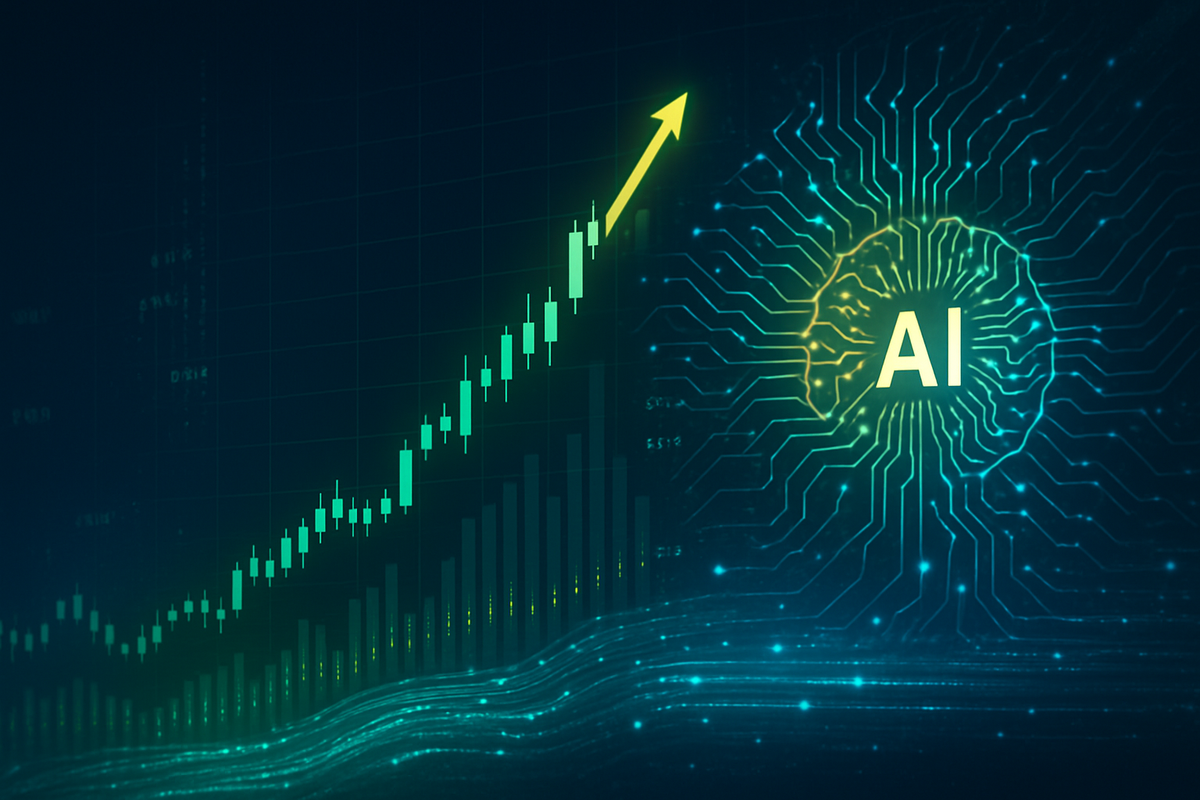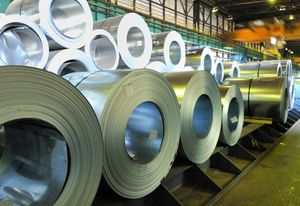
The U.S. stock market, as of October 6, 2025, continues its impressive ascent, with major indices hovering at or near all-time record highs, largely shrugging off a U.S. government shutdown that commenced just days prior. At the heart of this sustained bullish momentum is the technology sector, which remains the primary engine of growth, propelled by the relentless innovation in Artificial Intelligence (AI) and the anticipation of further interest rate cuts by the Federal Reserve. This environment fosters a strong "risk-on" sentiment among investors, who are betting on continued technological advancements and the robust financial health of leading tech companies, even as some voices raise concerns about escalating valuations.
This period of market resilience and tech-driven exuberance presents a complex landscape for investors and the broader economy. While the market's ability to largely disregard political disruptions signals underlying strength and confidence in corporate fundamentals, the ongoing government shutdown has led to a blackout of crucial economic data, leaving some investors feeling as though they are "flying blind." Nevertheless, the narrative is dominated by the transformative power of AI and the Federal Reserve's accommodative stance, creating a nuanced market where both significant opportunities and potential risks coexist.
The AI-Driven Ascent: Market Details and Key Players
The current market landscape is characterized by major indices reaching unprecedented levels. On October 6, 2025, the S&P 500 climbed 0.3%, building on its recent all-time high of 6,715.35 points recorded on October 2, which marked an impressive year-to-date rally of over 13%. Similarly, the Dow Jones Industrial Average added less than 0.1%, while the tech-heavy Nasdaq Composite led the charge with a 0.4% gain on October 6, having soared to 22,844.05 points on October 2, representing a remarkable 17.3% year-to-date increase. All three major indexes posted weekly gains for the week ending October 3.
This sustained upward trend is predominantly fueled by the "frenzy around AI." A significant event contributing to this sentiment was the 32.6% surge in Advanced Micro Devices (NASDAQ: AMD) stock on October 6, following an announcement that OpenAI would utilize its chips for artificial intelligence infrastructure. OpenAI itself has rapidly expanded into a $500 billion company due to its numerous AI deals, highlighting the immense capital flowing into the sector. The so-called "Magnificent Seven" tech giants, alongside other AI infrastructure providers, continue to be pivotal market movers, with increasing attention also being paid to software firms and companies successfully integrating AI solutions across diverse sectors.
The timeline leading to this moment includes the Federal Reserve's decision to cut its benchmark interest rate in September 2025—the first such reduction this year—which ignited optimism for further monetary easing. Market participants are now heavily anticipating two more quarter-point reductions by year-end 2025, specifically on October 29 and December 10. Concurrently, a U.S. government shutdown commenced on October 1, 2025, yet the stock market has largely absorbed this development without significant negative reaction, drawing on historical precedents where similar closures had minimal, often temporary, effects on financial markets.
Initial market reactions reflect a strong "risk-on" sentiment, compelling many investors to remain invested in this momentum-driven market. While the "October effect"—a historical tendency for stocks to decline in this month—appears to be largely dismissed, concerns about elevated valuations are resurfacing. Paradoxically, gold prices are also near record highs, indicating that underlying global economic uncertainties and geopolitical tensions are simultaneously driving a "flight to safety" among some investors, creating a complex and somewhat contradictory market environment.
Winners and Losers in the AI Revolution
The current market dynamics are creating clear winners, primarily within the technology sector, while also posing challenges for other segments. The most prominent beneficiaries are the large-cap technology companies, often referred to as the "Magnificent Seven," which continue to command significant investor attention due to their robust earnings and leadership in AI innovation. Companies like Advanced Micro Devices (NASDAQ: AMD) exemplify this, with its stock soaring on news of its chips being adopted for AI infrastructure. NVIDIA (NASDAQ: NVDA), another key player in AI chip manufacturing, also stands to benefit immensely from the escalating demand for high-performance computing necessary for AI development.
Beyond the hardware providers, software firms that are successfully integrating AI solutions into their products and services are poised for substantial growth. This includes companies developing AI platforms, enterprise AI applications, and those leveraging AI to enhance existing offerings across various industries. The "wealth effect," where consumers increase spending due to perceived higher wealth from rising asset values, could also indirectly benefit consumer discretionary companies, though the direct impact is less concentrated than on tech.
Conversely, companies that might relatively "lose" in this environment are those struggling to adapt to the rapid pace of technological change or those with business models less relevant to the AI revolution. Value stocks, particularly those in traditional industries that are not experiencing the same growth catalysts as tech, could see their relative performance lag further if market rotation does not occur. Companies heavily reliant on stable economic data might also face challenges due to the data blackout caused by the government shutdown, making investment decisions more difficult. Furthermore, businesses with high debt loads could face headwinds if interest rates, despite recent cuts, remain elevated compared to historical lows, or if the anticipated future cuts do not materialize as aggressively as expected.
Wider Significance and Historical Context
This sustained market rally, spearheaded by the technology sector, fits squarely into broader industry trends emphasizing digitalization, automation, and most significantly, the transformative power of Artificial Intelligence. AI is not merely a buzzword; it is fundamentally reshaping economic landscapes across various industries, from healthcare to finance and manufacturing. The current environment highlights a deepening reliance on technological innovation as a primary driver of corporate profitability and economic growth. This trend is further amplified by the expectations of continued monetary easing from the Federal Reserve, which provides a supportive backdrop for growth-oriented sectors.
The potential ripple effects are extensive. Competitors, even outside the direct tech sphere, are compelled to accelerate their AI adoption strategies to remain competitive, leading to increased R&D spending and strategic partnerships. For instance, traditional financial institutions are now heavily investing in AI to enhance fraud detection, algorithmic trading, and customer service, creating opportunities for specialized AI solution providers. Partners in the supply chain for technology companies, from raw material suppliers to logistics firms, also stand to benefit from increased demand. However, those unable to keep pace risk obsolescence, intensifying competitive pressures.
Regulatory and policy implications are also emerging. The rapid growth and pervasive influence of AI are attracting increased scrutiny from governments worldwide, raising questions about data privacy, ethical AI development, market dominance, and potential antitrust concerns. While the current U.S. government shutdown has had minimal immediate market impact, a prolonged closure could lead to a weekly reduction in GDP growth by 0.1%-0.2%, and the delay in crucial economic data releases could create uncertainty for policymakers and businesses alike. Historically, past government shutdowns have shown temporary economic disruptions, but the market's current resilience suggests a belief in their transient nature.
In terms of historical precedents, the current "frenzy around AI" and rapidly rising tech valuations evoke comparisons to the dot-com bubble of the late 1990s. While many analysts argue that today's tech companies possess more robust business models and profitability than many of their dot-com predecessors, the discussions about whether prices have "shot too high" are reminiscent of that era. The market's ability to shrug off a government shutdown also draws parallels to previous instances where financial markets demonstrated resilience against political gridlock, often focusing on fundamental economic drivers and corporate earnings.
What Comes Next: Navigating the Future Market
Looking ahead, the U.S. stock market faces a fascinating array of short-term and long-term possibilities. In the short term, the market's trajectory will likely continue to be influenced by further developments in AI, corporate earnings reports, and the Federal Reserve's upcoming interest rate decisions in October and December 2025. Continued strong earnings from tech giants could sustain the current momentum, while any signs of a slowdown or unexpected hawkish shifts from the Fed could introduce volatility. The resolution of the government shutdown will also be closely watched, though its immediate market impact has been muted.
In the long term, the transformative power of AI is expected to continue reshaping industries, creating new market leaders and necessitating strategic pivots across the board. Companies not yet fully embracing AI will need to adapt or risk being left behind. This could lead to increased M&A activity as traditional firms acquire AI capabilities or as tech giants consolidate their market positions. For investors, potential strategic pivots might involve re-evaluating diversification strategies, considering opportunities in sectors that are effectively integrating AI, and carefully monitoring valuation metrics to avoid potential bubbles.
Market opportunities are likely to emerge in specialized AI applications, cybersecurity (given the increased reliance on digital infrastructure), and potentially in sectors that successfully leverage AI for efficiency gains and innovation. However, challenges include the risk of overvaluation in certain tech segments, potential regulatory headwinds for dominant tech firms, and the broader economic uncertainties stemming from global geopolitical tensions. Potential scenarios range from a continued bull run, driven by sustained AI innovation and accommodative monetary policy, to a market correction if valuations become unsustainable or if unforeseen economic shocks materialize. Another scenario involves a sector rotation, where capital eventually flows from richly valued tech stocks into other undervalued sectors, particularly if interest rates stabilize or decline further.
Comprehensive Wrap-Up and Investor Outlook
In summary, the U.S. stock market's current state is defined by its remarkable resilience, with major indices at near-record highs, largely propelled by the technology sector's relentless charge. The "frenzy around AI" is the undisputed primary driver, attracting significant capital and fostering a strong "risk-on" sentiment among investors. This bullish momentum is further supported by the Federal Reserve's recent interest rate cut in September 2025 and the anticipation of further reductions by year-end, signaling an accommodative monetary environment. Surprisingly, the ongoing U.S. government shutdown has been largely shrugged off by the market, which appears to be focused on corporate fundamentals and technological innovation rather than political gridlock.
Moving forward, the market remains a nuanced environment. While the transformative potential of AI offers immense growth opportunities, particularly for leading tech companies and those successfully integrating AI solutions, concerns about high equity valuations persist. The "wealth effect" is supporting consumer spending, but the data blackout due to the government shutdown adds a layer of uncertainty, making it harder to gauge the precise health of the broader economy. The co-existence of surging equity markets and near-record gold prices underscores an underlying tension between optimism for growth and apprehension about global uncertainties.
For investors, the key takeaways are the paramount importance of AI in driving market performance, the Federal Reserve's influence on market sentiment, and the market's current ability to withstand political disruptions. Investors should closely watch the Federal Reserve's future rate decisions, paying attention to any shifts in monetary policy. Monitoring corporate earnings, especially from technology leaders, will be crucial for assessing the sustainability of current valuations. Furthermore, developments in AI regulation and the eventual resolution of the government shutdown will provide important clues about the market's direction and potential challenges in the coming months. Diversification and a careful assessment of risk remain essential in this dynamic and potentially volatile market landscape.
This content is intended for informational purposes only and is not financial advice






